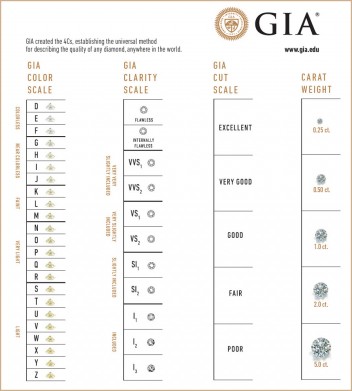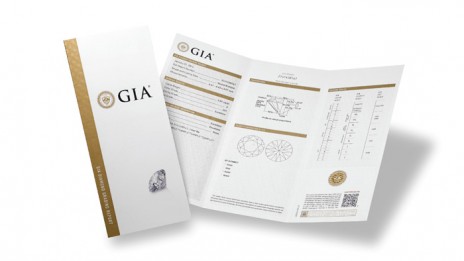The importance of the 4Cs

At first glance, two diamonds might look very similar, but have very different values. So, which one is worth more? And, how can you tell?
The answer? The 4Cs: carat, color, clarity and cut. Together, these 4Cs form a universal method to describe the quality of a diamond. As it’s universal, it’s understood and used by everyone in the industry, which is very handy if you visit several jewelers on your diamond quest. It’s a transparent way to determine the value of a stone, especially when differences aren’t clear to the naked eye, so you know what you’re buying. Are you thinking of buying diamond jewelry? Then the 4Cs are your best friends.
Now quickly read on, so you’ll be fully prepared when shopping for the perfect diamond.
Carat
Diamond carat refers to a diamond’s weight and is often measured in points. 100 points equals 1 carat, which is 0.2 grams. A common mistake people make is thinking that carat refers to the diamond’s size. But, as you are reading this blog, you obviously won’t be fooled!
Color
Although we say ‘color’, it actually refers to the diamond’s lack of color. The highest grade – D – is ‘Exc. White +’ (“Exceptionally White +”). So, the less color, the higher the grade. The scale has 23 steps and goes from grade D to Z. The lower you go on the scale, the more yellowish, brownish or greyish your diamond will be.
Most diamonds used in jewelry are ‘rare white’ to ‘slightly tinted white’, rated between G and J on the scale. From grade K and lower, the human eye can detect a yellow tint.
And what about fancy-colored diamonds, such as pink? They are valuable because they are so rare. Red, orange and green diamonds are the most expensive, followed by pink, blue and yellow diamonds.
Clarity
This important factor is determined by the microscopic flaws that (almost) every natural diamond has. They are called internal and external characteristics or inclusions. And even though you can usually only see them when they are 10x times magnified, diamond cutters try to cut and polish a stone to hide these flaws or work around them.
The scale for diamond clarity is:
LC – Loupe clean
VVS1 and VVS2 – Very, very small inclusions
VS1 and VS2 – Very small inclusions
SI1 and SI2 – Small inclusions
P1, P2 and P3 - Piqué
Cut
The cut has the largest influence on a diamond’s sparkle. There are three grades to be considered: proportions, symmetry and polish. Each grade is evaluated separately and given one of four results:
- Excellent - EX
- Very Good - VG
- Good - G
- Fair - F
Diamonds can be cut in many ways, for example to maximize carat weight or minimize internal characteristics (see clarity), which is great of course. However, if it is not cut properly, your diamond will lack sparkle and have a lower result on the scale… and logically: less value.
What popular cuts are there? The most well-known are brilliant, princess, marquise, oval, heart, pear, emerald and cushion. Each cut is priced differently. So, when looking for your dazzling diamond engagement ring, definitely keep this in mind!

Certification
Ehm, we were talking about the 4C’s… Is there a 5th? Yes, there is! Although it’s an unofficial one, it’s a really important one: certification. Diamond certification from a trusted and unbiased expert, like HRD Antwerp or GIA, ensures the quality of what you’re buying and gives you peace of mind. And, because it gives an independent summary of your diamond’s quality, the certificate can also be used for your insurance. For diamonds over 30ct, Laurence always provides you the certificate, as transparency is one of her core values.
Now you know the importance of the 4 (well, 5) Cs, you are ready to start your quest! Ready to spoil your significant other, but not sure where to start? Read this article with 6 tips to choose the perfect engagement ring.

